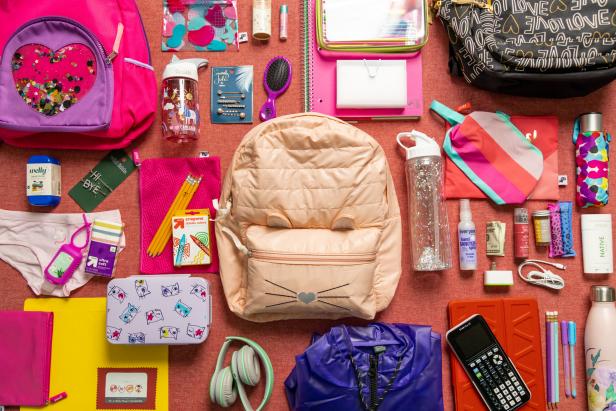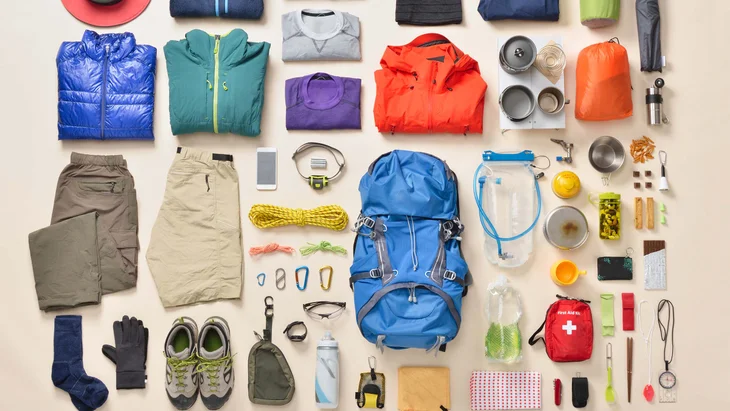By following expert suggestions on how to organize your backpack, you’ll be able to eliminate the frustration of rummaging through a messy backpack, increase your productivity, and feel more prepared for any situation.
Whether you’re heading to school, commuting to work, or embarking on an exciting adventure, organizing your backpack like a pro will not only improve your overall efficiency but also provide a sense of calm and order in your daily life.

With these valuable insights, you’ll be well-equipped to take charge of your backpack organization and enjoy the benefits of a streamlined and hassle-free experience wherever you go.
Choose the Right Backpack
Choosing the appropriate backpack is an essential first step in organizing your belongings effectively. Take the time to assess your needs and find a backpack that aligns with your lifestyle. Consider factors such as size, durability, and design features before making your plan.
When searching for how to organize your backpack, keep the following in your mind. Opt for a backpack with multiple compartments and pockets, as they offer versatile storage options and make it easier to categorize and access your items. Whether it’s a laptop sleeve, a designated pocket for stationery, or separate compartments for your gym clothes, having specialized storage spaces can significantly simplify your organization process.
Furthermore, adjustable straps and padded back support are crucial considerations for comfort. Look for a backpack that offers adjustable shoulder straps to ensure a proper fit and distribute the weight evenly across your shoulders.

Padded back support is essential, particularly if you carry heavy items or plan on wearing the backpack for extended periods. It helps alleviate strain and provides extra comfort during long commutes or outdoor adventures.
Remember, investing in a well-designed backpack that suits your needs will set the foundation for efficient organization. So, take your time to research and choose a backpack that combines functionality, durability, and comfort to support your daily activities. Your quest to learn how to organize your backpack will become much easier if you follow this.
Categorize and Prioritize
When it comes to organizing your backpack, categorization is key. Start by sorting your belongings into groups based on their purpose and how frequently you use them. This approach allows you to determine what items should be easily accessible and what can be stowed away in deeper pockets or compartments.
For instance, if you’re a student, prioritize school supplies like pens, notebooks, and textbooks by keeping them within reach in an easily accessible pocket or compartment. This way, you can quickly retrieve them during classes or study sessions.
On the other hand, personal items like keys, wallet, or mobile phone can be stored in a secure inner pocket to ensure their safety and prevent them from getting lost among other items.

By categorizing and prioritizing your belongings, you streamline your access to essential items while keeping less frequently used items out of the way. Make sure you follow this guide on how to organize your backpack for best management.
This not only saves time but also reduces frustration when searching for specific items in your backpack. Additionally, it helps maintain order and prevents your backpack from becoming a cluttered mess.
Remember, organizing your backpack based on purpose and frequency of use ensures that you have everything you need at your fingertips, making your daily activities more efficient and hassle-free.
Utilize Compartments and Pockets
Make the most of your backpack’s built-in organizational features by assigning each compartment a specific purpose. Take the time to consider the different sections and pockets and determine what items they are best suited for. By doing so, you can create a streamlined system that allows for quick and easy access to your belongings.
For example, designate one compartment specifically for your electronics, such as a laptop or tablet. This compartment should have padding or a protective sleeve to keep your devices safe. Another compartment can be dedicated to stationery items like pens, pencils, and highlighters, making them readily available for work or study.
Additionally, set aside a separate section for snacks or a water bottle, ensuring you have a convenient and easily accessible spot to store your sustenance. This is a great way to make sure you do a great job and nail how to organize your backpack guide.
Utilize the smaller pockets for storing smaller items that tend to get lost easily, such as cables, chargers, earphones, or small accessories. These pockets are perfect for keeping these items organized and preventing them from getting tangled or misplaced.

By allocating specific spaces for different categories of items, you’ll eliminate the need to rummage through your entire backpack, saving valuable time and reducing frustration. Plus, it ensures that everything has its designated place, making it easier to maintain an organized backpack in the long run.
Take advantage of your backpack’s compartments and pockets, and leverage their design to create an efficient organizational system that suits your specific needs. By doing so, you’ll enjoy the benefits of a well-organized backpack and have a stress-free experience whenever you need to retrieve an item.
Invest in Organizational Tools
In addition to utilizing the built-in compartments of your backpack, investing in additional organizational tools can take your backpack organization to the next level. Keep this part of our how to organize your backpack guide in your mind. Pouches, organizers, and packing cubes are valuable assets that can help you compartmentalize and separate various items, ensuring that everything has its designated place.
Pouches are versatile and can be used for storing a range of items. For example, you can use a pouch to keep toiletries neatly organized, preventing leaks or spills from affecting other belongings. They are also handy for storing small accessories like charging cables, adapters, or earbuds, keeping them easily accessible without getting entangled.
Organizers, such as small compartments or dividers, can be inserted into larger pockets or compartments within your backpack. These organizers provide additional segmentation, allowing you to create separate sections for specific items. For instance, you can use an organizer to keep your writing utensils in one place or to store your makeup essentials separately from other belongings.

Packing cubes are particularly useful for travelers. These fabric containers come in different sizes and can efficiently organize clothing items. By packing your clothes into packing cubes, you can keep them neatly folded and separate different types of garments. This makes it easier to locate specific items without having to unpack and repack your entire backpack.
Investing in these additional organizational tools not only helps maximize the use of space in your backpack but also enhances your ability to find items quickly and efficiently. By assigning specific tools for different categories of items, you maintain an organized system that saves time and reduces stress.
Consider your specific needs and the items you frequently carry in your backpack when selecting pouches, organizers, or packing cubes. These tools are versatile and customizable, allowing you to adapt them to suit your organizational preferences. This way, our how to organize your backpack will help you pack better.
Packing Techniques
Efficient packing techniques can maximize space and prevent items from shifting during transit. Consider the following tips and learn how to organize your backpack:
- Roll clothes instead of folding them. This technique saves space and minimizes wrinkles.
- Place heavier items closer to your back, as this helps distribute weight more evenly and prevents strain on your shoulders.
- Use packing cubes or zip-lock bags to compress clothes and create more room for other items.
- Secure loose items with elastic bands or Velcro straps to prevent them from shifting and causing discomfort.
Read more: How to Wash a Vera Bradley Backpack – 4 Simple Steps
Regular Maintenance and Decluttering
To ensure the longevity of your organized backpack, regular maintenance and decluttering are essential. Dedicate a few minutes each week to tidy up and reevaluate the contents of your backpack. Remove any unnecessary items that have accumulated over time, such as old receipts, used tissues, or expired items. Discard or store them elsewhere to prevent clutter from building up.
Sort out loose papers, handouts, or notes, and organize them in folders or binders to keep them neat and easily accessible. Check that all your belongings are in their designated compartments or pockets, and make adjustments as needed. This practice will help you maintain the order and efficiency of your backpack’s organization.
Regular maintenance not only keeps your backpack tidy but also allows you to identify any items that may need replacement or repair. Take note of worn-out zippers, fraying straps, or any other signs of wear and tear. Addressing these issues promptly will help extend the lifespan of your backpack and ensure its continued functionality.

By incorporating regular maintenance into your routine, you’ll prevent the accumulation of unnecessary clutter, making it easier to maintain an organized backpack in the long run. A clean and well-maintained backpack will not only enhance your efficiency but also give you a sense of preparedness and confidence in any situation. Keep these tips from the how to organize your backpack guide in your mind for best results.
Conclusion
Organizing your backpack like a pro is a skill that can greatly enhance your daily routine. By choosing the right backpack, categorizing and prioritizing items, utilizing compartments and pockets, investing in organizational tools, employing efficient packing techniques, and performing regular maintenance, you can optimize space and effortlessly find what you need when you need it.
Remember, an organized backpack not only saves time and reduces stress but also enables you to be prepared for any situation. So, follow our how to organize your backpack guide, put these tips into practice, and experience the benefits of a well-organized backpack in your everyday life.

